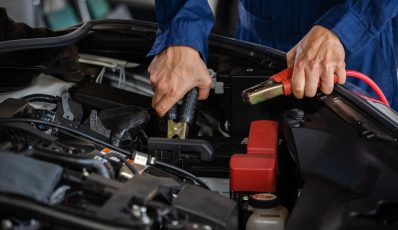In many industries, heavy items often need to be lifted to higher floors or levels, or simply lifted up in order to get access to what lies beneath them. Attempting to do so manually can be very tricky and even result in injury. This is where cable winches come to the rescue. Read this article to find out what they are and learn more about their parameters.

In many industries, heavy items often need to be lifted to higher floors or levels, or simply lifted up in order to get access to what lies beneath them. Attempting to do so manually can be very tricky and even result in injury. This is where cable winches come to the rescue. Read this article to find out what they are and learn more about their parameters.
What is a cable winch?
Cable winches are a type of pulley, i.e. devices for moving items by means of a cable and a special hitch. They belong to the same group of machines as hoists, lifts, jacks, cranes or overhead cranes. Cable winches have a set of mechanisms mounted on a separate supporting structure. They are used to transport (pull) loads vertically or horizontally over a distance of up to several dozen metres.
Cable winches make it much easier to move items weighing several hundred kilogrammes or even several tonnes. By using special pulleys, you can even double their lifting capacity. A safety brake should be a standard construction element of cable winches.
Types of cable winches
Depending on the type of motor, there are manual or powered winches (powered by an electric or combustion engine). Some models also have pneumatic or hydraulic motors. They can also be divided depending on how they are controlled:
- Operation from a distance is carried out using a wired control unit or remote control in the case of electrical and hydraulic models.
- Manual operation using a worm drive with a crank or a lever (mechanical cable winches).
-
Pulley – 1600 W – 990 kg – 12 m 329.00 €
-
Pulley – 1300 W – 800 kg – 12 m
-
Crane Trolley – 500 kg 359.00 €
-
Beam Trolley – 990 kg 539.00 €
Cable winch parameters
When choosing a cable winch for your company or workshop, you should first get to know its parameters. There are some very important aspects to keep in mind. When deciding which one to choose, pay attention to:
- lifting capacity (from several hundred kilogrammes to several tonnes),
- engine power (determines the work efficiency),
- electricity consumption (affects the operating costs of the winch),
- cable length, pull strength and cable structure preventing twisting (ensures comfort of use and user safety),
- maximum height of lifting/lowering,
- automatic brake and emergency switch (in the event of a power failure, voltage drop),
- length of the network cable to the remote control,
- possibility to operate using one hand (makes manoeuvring and control much easier).
Cable winches with a very small lifting capacity will not need to undergo LOLER examinations. .






Share